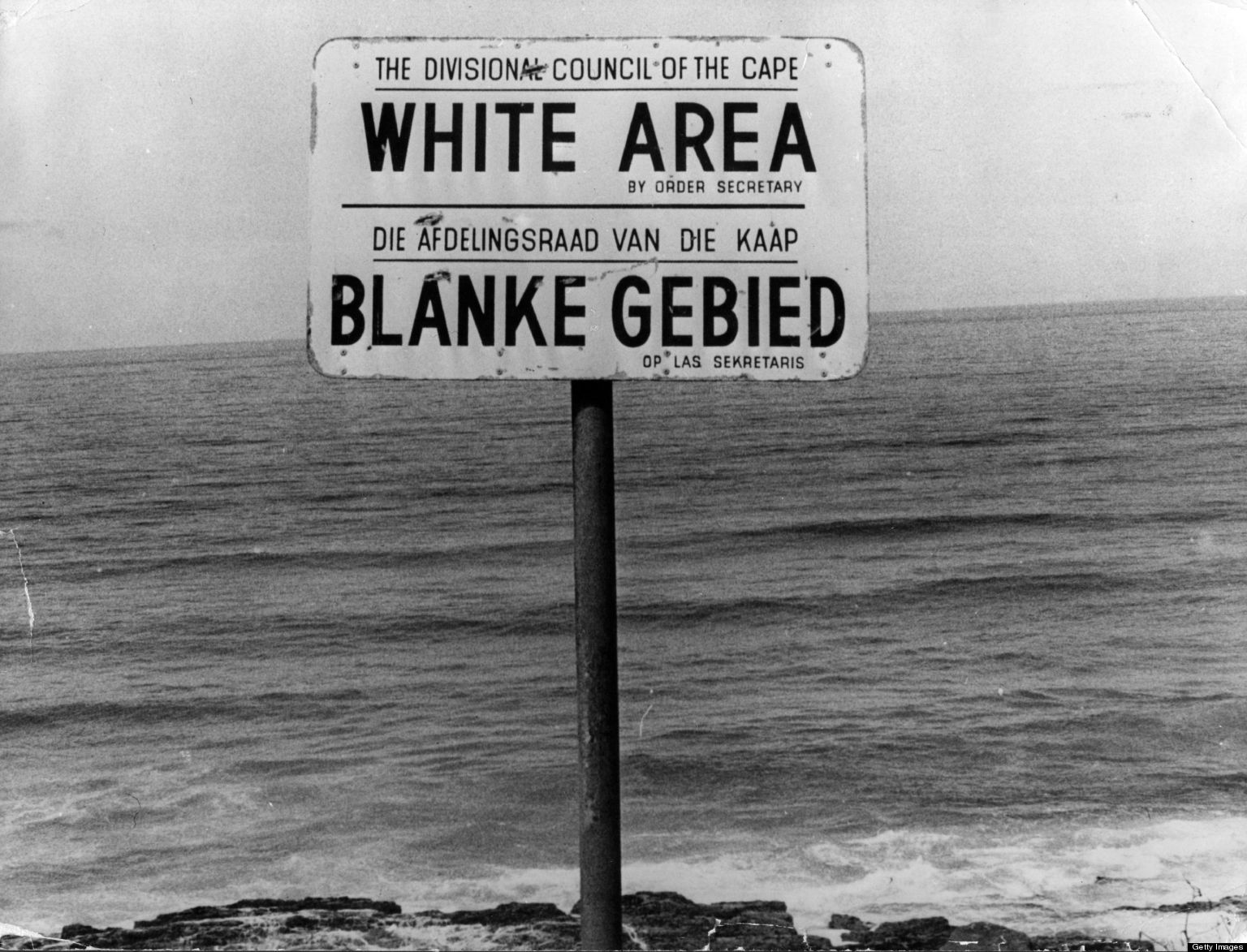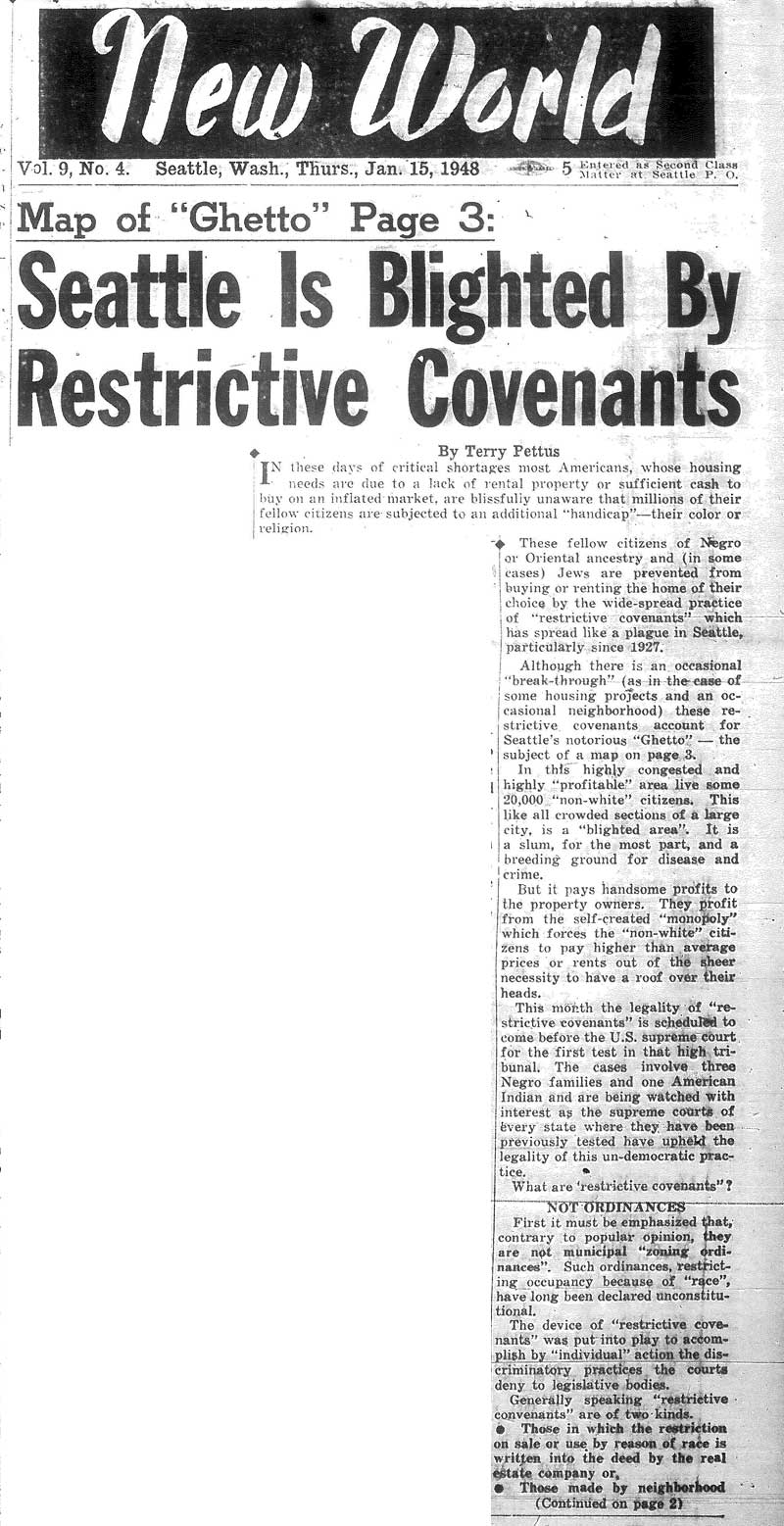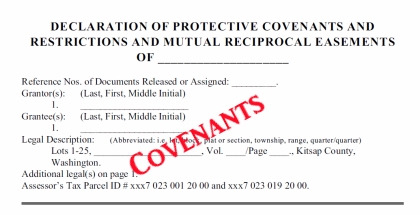Back in the 70s, while we liberals were protesting Apartheid in Capetown, Seattle’s ethnic housing practices created ghettoes.
Segregation here, as in South Africa, was not just for “colored” people. Restrictive racial covenants prohibited the sale or rental of properties to Blacks, Asians and Jews. Fancy places like The Heights and Broadmoor advertised their exclusiveness by placing “restricted” signs at the entrance to their gated communities … a code for no Jews, Catholics or Blacks wanted. As recently as a decade ago, a colleague moving into Broadmoor was assured that it was a safe place for her kind of people. 
Though we had no law saying Black people could not live outside the Central District, Seattle banks refused to lend to anyone who lived in a place the banks (then dominated by Euros) did not like. Real estate agents supported this policy be guiding customers to comfortable neighborhoods. Ethnic clustering in neighborhoods created the Catholic enclave on North Capital Hill, a Jewtown on South Capital Hill, a Porgy and Bess ghetto in the Central District and Chinatown in the International District. And of course the schools were segregated … just as they are being re-segregated today.
The Central District is changing. Schools here will soon not need segregation, the schools will no longer be in a Black neighborhood. When my wife and I moved to our house near Meany Middle School in 1977, the streets around Meany to our South were exclusively Black. We actually chose this neighborhood BECA– USE it had a large Black community. Rosalie Johnson, 84, reminisces in in the Seattle Times, that Central District “was almost a city within the city, with its own economy. We had our own doctors, lawyers, newspaper — everything.” For people like myself, this also meant black restaurants, churches,an activist community and schools. That was inspiring. Seattle Times’ Gene Balk reports 73 percent of the Central District was Black .. a number that strikes me as far too low. We wanted our children to benefit from growing up here.
Now Balk says that Black faces … while still seen, are diluted by the faces of  young affluent Euros, Asians and Latinos. Black folks will soon be only 10% of the neighborhood. Asians and Latinos now make up nearly a quarter of the neighborhood’s inhabitants. Churches that were once the cultural center of this place, are losing their membership and most of the black restaurants have gone away. Garfield High School’s jazz band is Asian and Euro. The famed athletic program may need to import Black kids from Rainier Beach.
young affluent Euros, Asians and Latinos. Black folks will soon be only 10% of the neighborhood. Asians and Latinos now make up nearly a quarter of the neighborhood’s inhabitants. Churches that were once the cultural center of this place, are losing their membership and most of the black restaurants have gone away. Garfield High School’s jazz band is Asian and Euro. The famed athletic program may need to import Black kids from Rainier Beach.
As of 2010, The Times reports that the Central District became majority white; not even 20 percent of Central District residents are Black. In fact, it’s only the black population that is declining, Asians and Latinos are growing in numbers. Blank reports that Blacks in the District will shrink to less than 10 percent by the end of this decade. The area some want to call “Africatown” will look like the rest of Seattle.
Read about Rosalie Johnson, still a resident here, in the Times’ article by Mr, Balk.
This is deep. As I was a child growing up in Seattle. I have seen the drastic changes. They were never good. So we’re deemed that but it did nothing. I would say that as kids we didn’t know it was racially motivated that is why we are placed here. CD or the central district was primarily afircan American with deep culture. Full of restaurants and bars that played great jazz or what ever your fancy. With the African American church being the pillars of the community. Now they are Meek and very quiet. Watching as this gentrification has happened it has created despair for those who need to live in Seattle.
The question is with the dot commers coming in and purchasing 400,000.00 homes its drives the people who built this inner city. Tears the community apart. Untied we stand divided we fall. Now we just keep falling.